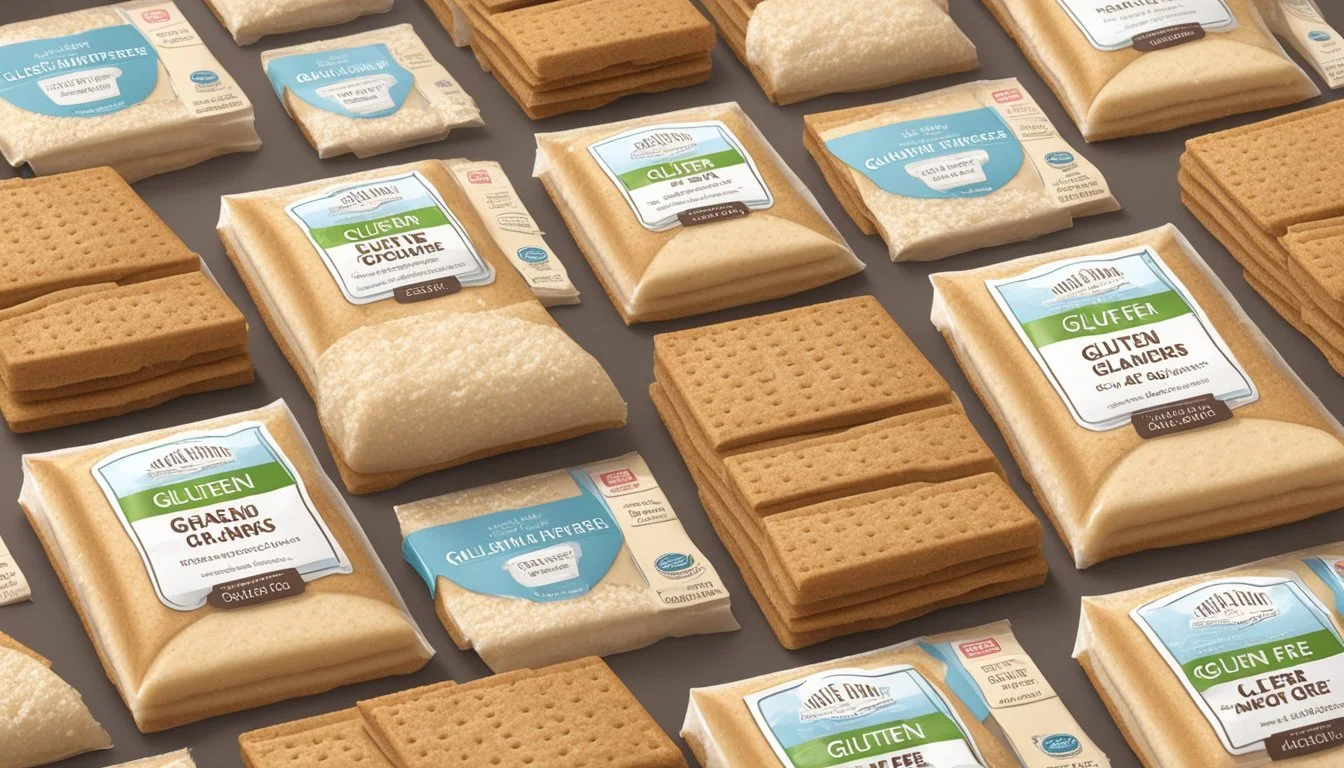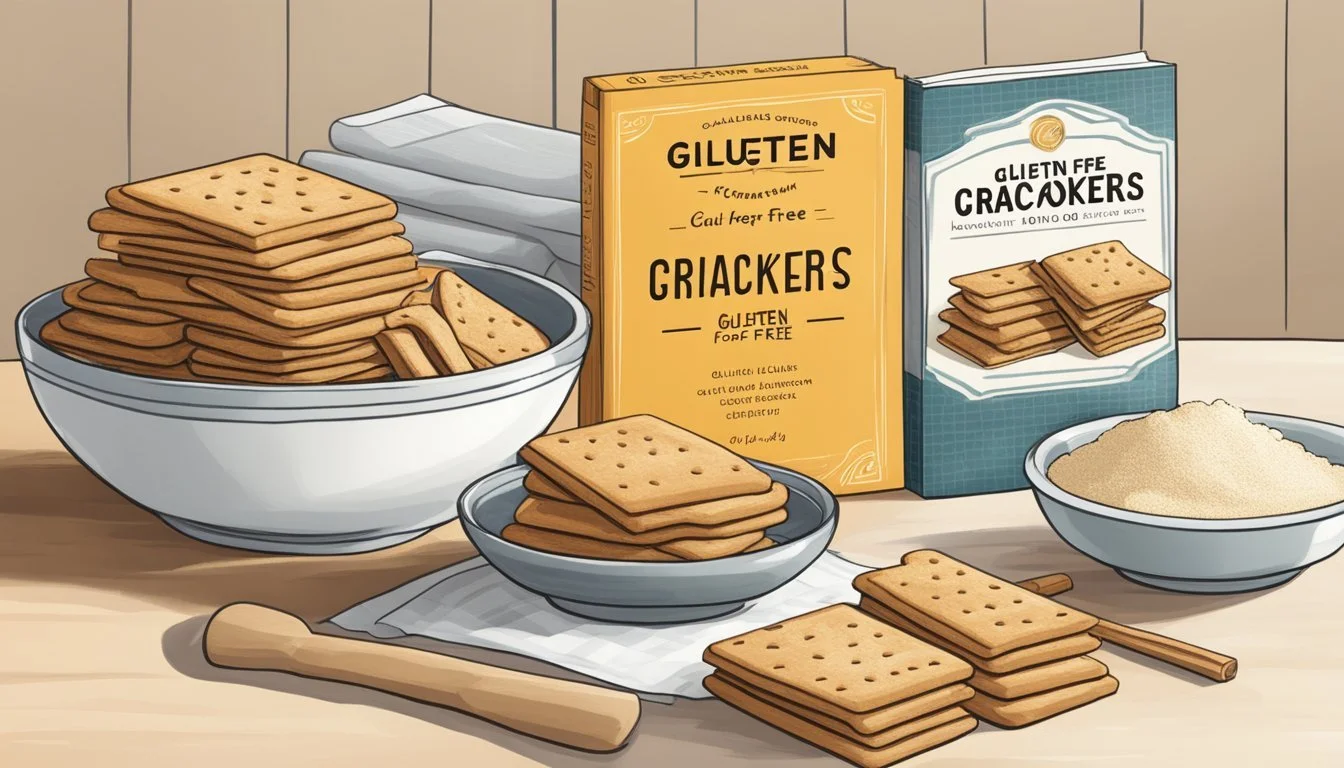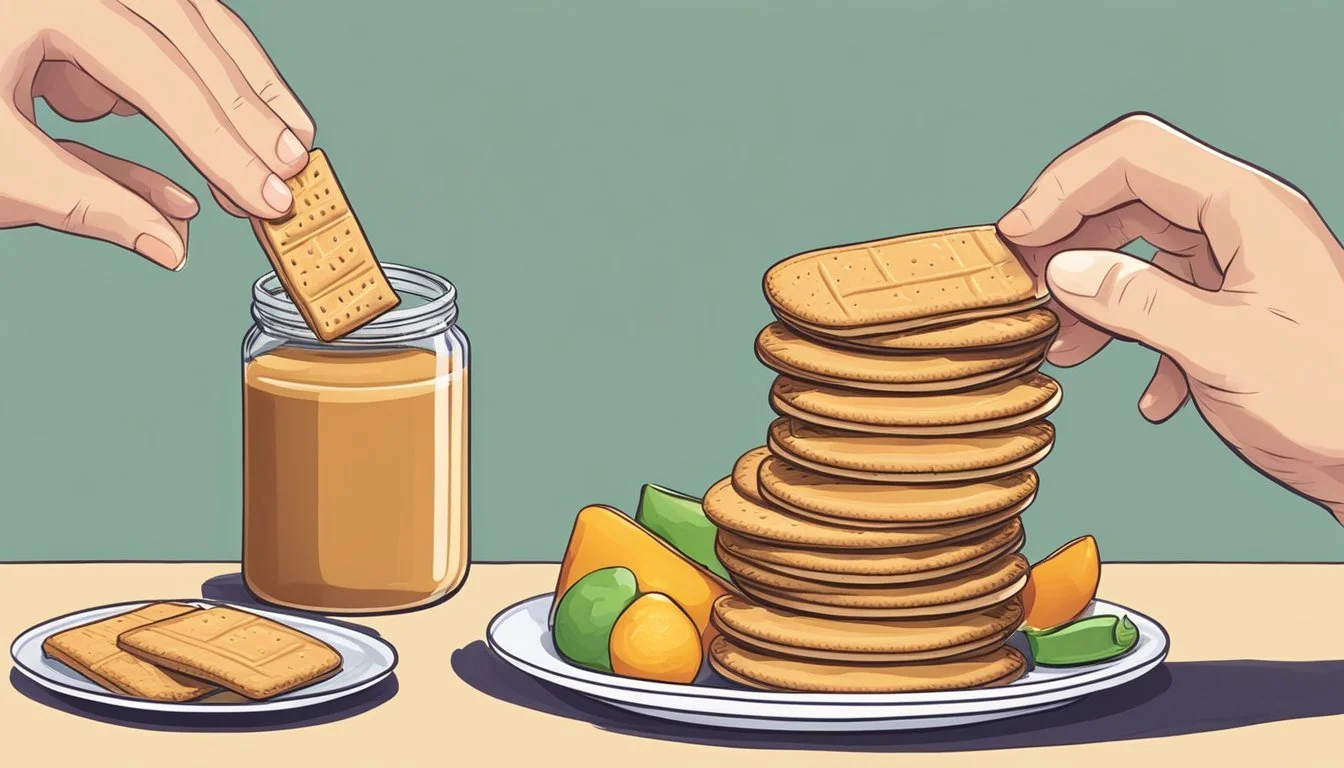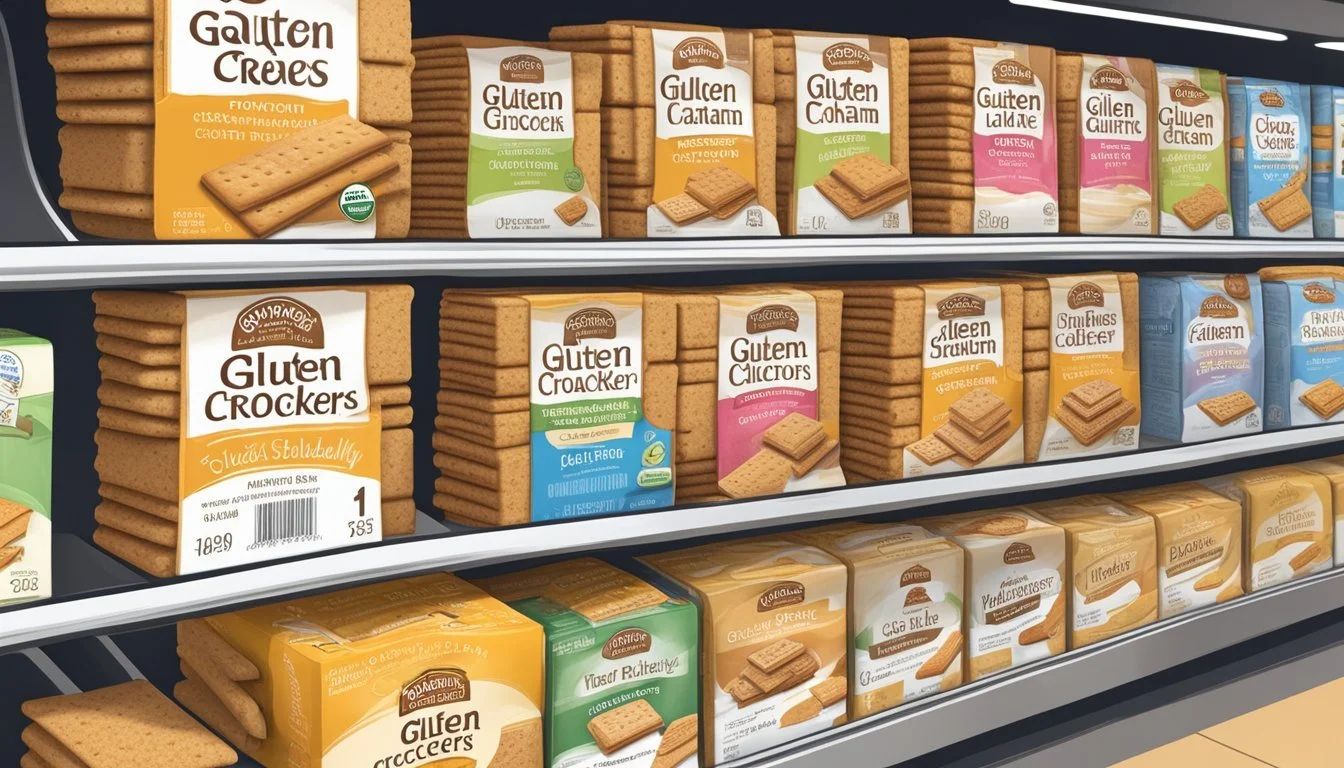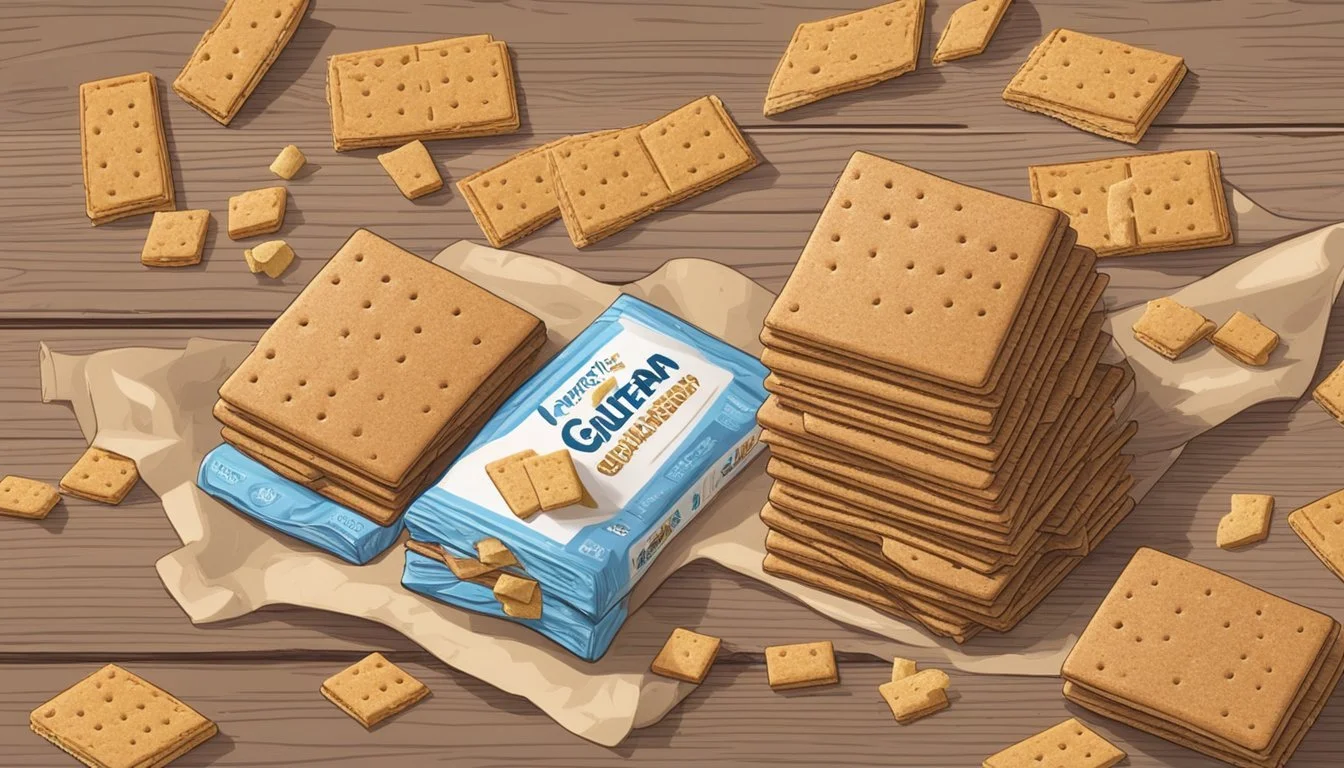Are Graham Crackers Gluten-Free?
Unveiling the Truth About This Popular Snack
Graham crackers are a popular snack food that traditionally contain gluten, a group of proteins found in wheat, barley, and rye. This makes standard graham crackers unsuitable for anyone with celiac disease, gluten intolerance, or gluten sensitivities. For individuals managing these conditions, consuming gluten can lead to a range of adverse reactions, from digestive issues to more serious health complications. As awareness of gluten-related disorders has increased, so has demand for gluten-free products, leading to the development of gluten-free alternatives to many traditional foods, including graham crackers.
In response to consumer needs, a variety of brands now offer gluten-free graham crackers, which are made using alternative flours that do not contain gluten. These alternatives aim to replicate the taste and texture of regular graham crackers while adhering to the dietary restrictions of a gluten-free diet. Gluten-free graham crackers are labeled as such, and some may even carry a certification to reassure consumers of their gluten-free status. When choosing gluten-free graham crackers, consumers should be aware of the distinction between products that are certified gluten-free and those that are simply labeled gluten-free, as the latter may still contain traces of gluten due to cross-contamination during manufacturing.
Understanding Gluten in Graham Crackers
In the context of graham crackers, gluten plays a crucial role in texture and cohesiveness, while individuals with celiac disease or gluten sensitivities must avoid gluten-containing graham crackers to maintain their health.
The Role of Gluten in Traditional Graham Crackers
Gluten, a group of proteins found in wheat, is paramount in giving traditional graham crackers their characteristic texture and structure. The primary ingredient in these crackers, graham flour, is a type of whole wheat flour that naturally contains gluten. Gluten's viscoelastic properties impart the crackers with chewiness and help them maintain their shape during baking.
Celiac Disease and Gluten Sensitivities
Individuals with celiac disease or gluten sensitivities cannot tolerate gluten, as it triggers harmful reactions in their bodies. Even a small amount found in traditional graham crackers can lead to severe gastrointestinal and systemic symptoms for these individuals. It is essential for their well-being to opt for graham crackers labeled as gluten-free, which are made with alternative flours that do not contain this problematic protein.
Ingredients in Gluten-Free Graham Crackers
Creating gluten-free graham crackers requires careful ingredient selection to mimic the taste and texture of traditional graham crackers, which typically contain gluten. It's essential to use a blend of gluten-free flours and specific binding agents to ensure the crackers hold together without the presence of gluten.
Common Ingredients and Substitutes
Flour: The base of gluten-free graham crackers is often a gluten-free flour blend, which may include rice flour, sorghum flour, and tapioca starch. Some recipes may call for all-purpose gluten-free flour or a blend designed to mimic the texture of wheat flour, ensuring that the crackers have the proper consistency.
Binders: Since gluten-free flours lack the binding properties of gluten, products like xanthan gum are added to help give the crackers structure.
Sweeteners: Classic graham crackers are known for their sweetness. For the gluten-free variety, brown sugar and honey are common ingredients. Molasses can also be used to deepen the flavor.
Fats: Oil or butter is used to create a crumbly texture. In some cases, recipes may opt for alternatives like coconut oil for those with dairy intolerance.
Additional Flavors: Cinnamon is a staple for spicing up these crackers and is frequently included in recipes. The characteristic flavor of graham crackers often comes from this spice.
Gluten-Free Certification: Ingredients should be certified gluten-free for individuals with celiac disease or severe gluten sensitivities to avoid cross-contamination risks.
Binding Agents in Gluten-Free Options
The lack of gluten in these crackers means alternative binding agents must be employed to achieve the desired texture and cohesion.
Xanthan Gum: This is a common gluten replacement used as a binding and thickening agent. It helps replicate the chew and texture that gluten provides in baked goods.
Eggs: Some recipes use eggs as a binder, which contributes to the structure and moisture of the crackers.
Baking Powder: Often included as a leavening agent, baking powder is crucial in allowing the crackers to rise slightly during baking.
Notably, each ingredient must be carefully measured and combined to create homemade gluten-free graham crackers or an ideal gluten-free graham cracker crust. Brands like Simple Mills offer ready-made gluten-free alternatives for convenience.
Gluten-Free Graham Cracker Brands
For individuals with gluten intolerance or celiac disease, finding a suitable substitute for traditional Graham crackers is essential. A variety of brands offer gluten-free options that cater to this need, providing alternatives that are often made with alternative grains or gluten-free flour.
Store-Bought Gluten-Free Graham Crackers
Several brands have emerged as popular choices for gluten-free Graham crackers, each with unique attributes:
Kinnikinnick Foods: Known for their S'moreables, a graham-style cracker that's both gluten and dairy-free.
Schar: Offers Honeygrams, which are certified gluten-free, non-GMO, and lactose-free.
Simple Mills: Provides a selection of grain-free, gluten-free graham-style crackers, available in flavors like cinnamon honey, chocolate brownie, and chocolate mint.
Nabisco: While Nabisco’s traditional Graham crackers contain gluten, those seeking gluten-free options must look to other brands as Nabisco does not offer a gluten-free variant.
Nairn's Gluten-Free Oat Grahams: Available in Original, Chocolate Chip, and Stem Ginger, providing a different texture due to its oat composition.
Annie's Gluten-Free Bunny Graham Cookies: These gluten-free options are shaped like bunnies, appealing to a younger demographic and suitable for school lunches or as a snack.
Glutino: Known for a range of gluten-free products, their version of Graham crackers is a go-to option for many gluten-sensitive consumers.
Enjoy Life: Their products are certified gluten-free and free of many common allergens, catering to a wide range of dietary restrictions.
Pamela's: Offers gluten-free Graham crackers that are crafted for both taste and texture, suitable for snacking or making into pie crusts.
Brand Comparisons and Differences
When comparing these gluten-free brands, consumers should consider factors such as ingredients, texture, flavor options, and availability:
Ingredients: Brands may vary in their choice of gluten-free flours, with some using oat flour and others favoring combinations of rice, tapioca, and potato flours.
Texture: Some brands may produce a crunchier texture, similar to traditional Graham crackers, while others might have a softer bite which may be preferred by some consumers.
Flavor Options: Simple Mills stands out with their unique flavors, such as chocolate brownie, catering to those looking for more than the classic honey or cinnamon taste.
Availability: Nairn's Gluten-Free Oat Grahams are noted to be easily accessible online, while other brands like Simple Mills are found in a variety of stores, including Sprouts and Whole Foods.
This information allows gluten-free consumers to select the best graham cracker alternative based on their personal preferences and dietary requirements.
Making Your Own Gluten-Free Graham Crackers
Creating gluten-free graham crackers at home allows for customization and ensures that those with dietary restrictions can still enjoy this classic treat. These crackers can be made with simple substitutions and specific techniques.
Homemade Recipe Essentials
One needs a range of gluten-free ingredients to start making homemade graham crackers. The basic ingredients include:
Gluten-free flour blend
Almond flour
Brown sugar and granulated sugar
Baking soda
Cinnamon
Salt
Butter or a dairy-free alternative
Honey or maple syrup for a vegan option
Water
Additionally, to replicate the traditional whole wheat pastry flour often used in graham crackers, one might opt for a gluten-free flour blend that includes a variety of whole grains to mimic the nutty flavor and texture. As for equipment, parchment paper, a rolling pin, a sharp knife or pizza cutter, and a fork are essential for shaping and detailing the crackers.
Step-by-Step Baking Guide
Baking homemade graham crackers involves precision and patience. Here are the steps to achieve the perfect gluten-free treat:
Prepare the Dough: Whisk together the dry ingredients. Cut in the butter using a pastry blender until the mixture resembles coarse crumbs. Stir in the honey or maple syrup and add water gradually until the dough forms.
Roll and Cut: Place the dough between two sheets of parchment paper and roll out to a rectangle about 1/8 inch thick. Use a sharp knife or pizza cutter to cut the dough into rectangles.
Detailing: Perforate each rectangle with a fork to create the traditional graham cracker appearance.
Bake: Transfer the dough, on the parchment paper, to a cookie sheet. Bake in a preheated oven until the edges are slightly brown and crispy.
Cool: Let the crackers cool on the pan for 10 minutes before transferring them to a wire rack to cool completely.
Following these steps, one can create delicious dairy-free graham crackers that are comparable in texture and flavor to their traditional wheat-based counterparts.
Serving and Enjoying
Gluten-free graham crackers offer a versatile base for various desserts and snacks. Whether incorporated into a thin crust for cheesecakes and pies or enjoyed as a crunchy accompaniment to milk, their utility in a gluten-free diet is considerable.
Creative Uses for Gluten-Free Graham Crackers
Gluten-free graham crackers shine as a foundational element in dessert recipes. They can be used to create a graham cracker crust that’s perfect for both baked and no-bake desserts. Cheesecakes and pumpkin pie bars especially benefit from the sturdy yet crumbly texture that a crust made from crushed gluten-free graham crackers provides. For a classic treat, one can layer them with chocolate and marshmallow to make s'mores—a nostalgic favorite that can be made gluten-free to accommodate dietary restrictions.
Cheesecake: A crust made from crushed gluten-free graham crackers, combined with melted butter, forms the ideal base.
Pumpkin Pie Bars: Adding spices such as cinnamon to the crust enhances the flavor profile of autumn-inspired desserts.
These crackers can also be crafted into bars when mixed with ingredients such as chocolate chips, nuts, and condensed milk. Layering them with a variety of toppings offers a simple yet delicious sweet treat for lunchboxes or quick snacks.
Storage and Preservation Tips
Proper storage ensures that gluten-free graham crackers maintain their freshness and texture. To maximize shelf life and preserve their crispness, it is important to keep them in an airtight container once the original packaging has been opened. Storing them at room temperature away from moisture and light can maintain quality.
Airtight Containers: Prevents exposure to air and moisture, which can soften the crackers.
Room Temperature: Ideal for preventing the development of a stale taste or texture.
For those who bake with gluten-free graham crackers, leftover crusts or pieces can be stored in the freezer for future use. When sealed properly in freezer-safe bags or containers, they can last for several months, ready to be used in making the best gluten-free versions of cheesecakes, pies, and more.
Where to Buy Gluten-Free Graham Crackers
For individuals with celiac disease or gluten sensitivity, finding gluten-free graham crackers requires knowing the right places to shop. This section will guide you through retail and online options, and provide tips for selecting the best product for your dietary needs.
Retail and Online Shopping Options
When it comes to purchasing gluten-free graham crackers, consumers have a variety of options.
Grocery Stores: Many grocery stores carry gluten-free options, including Whole Foods, Kroger, and Sprouts. Look for a dedicated gluten-free section or check the health food aisle.
Walmart and Target: These major retailers often stock a selection of gluten-free products, including store-bought gluten-free graham crackers, in their snack or health food aisles.
Online Retailers: Amazon provides a broad selection, including popular brands like Nairn's Gluten-Free Oat Grahams and Kinnikinnick's S'moreables.
Retailers may offer different features:
Kosher: Some of the gluten-free options might also be certified kosher.
Nut-Free and Peanut-Free: Brands like Kinnikinnick cater to those with nut allergies by providing products free from top allergens.
Retailer Features Product Examples Whole Foods Kosher Options Various Brands Walmart Economic Choice Kinnikinnick S’moreables Target Accessibility Selection may vary Amazon Wide Selection Nairn's, Simple Mills Kroger Convenience Store Brand Options Sprouts Specialty Items Health-conscious Brands
Selecting the Best Product for Your Needs
Choosing the right gluten-free graham cracker involves more than just checking for the absence of gluten. Here are factors to consider:
Ingredient List: Beyond being gluten-free, some might seek products that are also free from other allergens. Reading labels for nut-free or peanut-free indications is essential.
Certifications: Look for certified gluten-free labels to ensure the product meets strict standards.
Taste and Texture: Gluten-free doesn't have to mean compromising on enjoyment. Consider trying different brands to find the preferred taste and texture.
By being aware of the options and how to identify the best-for-you product, purchasing gluten-free graham crackers can be a simple and satisfying process.
Health and Dietary Considerations
Graham crackers are a popular snack that can vary significantly in nutritional content and compatibility with different dietary needs. This section delves into the health-related aspects of graham crackers, particularly focusing on how they align with gluten-free and various other diets.
Nutritional Content and Benefits
Graham Crackers generally consist of whole or refined wheat flour, sugar, oil, a leavening agent, and salt. However, the nutritional value can differ depending on whether the graham crackers are made from refined or whole-grain flour. Those made with whole-grain flour contain more fiber and nutrients. Certain brands fortify their crackers with vitamins and minerals to enhance nutritional value.
Typical nutritional benefits per serving may include:
Fiber: aids in digestion and provides a feeling of fullness
Magnesium: necessary for many bodily processes
Selenium: plays a crucial role in metabolism and thyroid function
Niacin: supports the nervous system and energy production
Inclusion in Various Diets
Gluten-Free Diets: Traditional graham crackers contain gluten, as they are made with wheat. However, several brands produce gluten-free graham crackers to cater to those with celiac disease or gluten sensitivity. Brands like Pamela's and Kinnikinnick offer gluten-free alternatives that use a blend of gluten-free flours.
Vegan and Grain-Free Diets: While some graham crackers may incidentally be vegan, checking the label for ingredients like honey is important for strict adherence to a vegan diet. Grain-free options are less common, as graham crackers typically derive from grain. Those on grain-free diets may need to seek specialty products or make homemade alternatives with grain-free flours.
Additionally, some brands create gluten-free alternatives to related snacks, such as animal crackers, which may appeal to those looking for a wider variety of gluten-free treats.
In conclusion, consumers should closely examine product labels to ensure that the graham crackers meet their dietary preferences and restrictions. Nutritional content can vary, so it's important for those on specific diets to choose products that align with their health goals.
FAQs About Gluten-Free Graham Crackers
Navigating the world of gluten-free snacks can be challenging, but for those with gluten sensitivities, having accurate information is crucial. This section serves to address frequently asked questions specifically about gluten-free graham crackers.
Common Questions Answered
Are traditional graham crackers gluten-free?
No, traditional graham crackers are typically made with graham flour, which is a type of whole wheat flour, and therefore they contain gluten.
Can people with gluten sensitivities enjoy graham crackers?
Yes, there are brands such as Schar and Simple Mills that offer gluten-free versions of graham crackers, including honey grahams, chocolate honeygrams, and apple cinnamon varieties.
What are some gluten-free graham cracker options?
Honey Grahams: Schar Gluten-Free Honeygrams offer a safe and sweet alternative for those missing the classic honey taste of graham crackers.
Bunny Grahams: Brands like Annie's offer gluten-free bunny grahams, a delightful option for kids and adults alike.
Simple Mills Sweet Thins: A more recent entrant to the market, these thins come in a variety of flavors, including chocolate brownie and chocolate mint, catering to those with a gluten-free diet.
Is it possible to use gluten-free graham crackers in recipes?
Absolutely. Gluten-free graham crackers can be substituted in any recipe calling for regular graham crackers, such as in the making of a graham cracker crust or combined with marshmallows and chocolate for gluten-free s'mores.
Are gluten-free graham crackers also free from other allergens?
Not all gluten-free graham crackers are free from other allergens. Consumers are advised to check labels for the presence of ingredients like egg, dairy, or nuts, especially when managing multiple food sensitivities.
Do gluten-free graham crackers taste different?
Gluten-free graham crackers may have a texture and flavor slightly different from their gluten-containing counterparts, largely due to the alternative flours used. However, many find these differences to be minimal or even preferable depending on the brand.
Where can one purchase gluten-free graham crackers?
They are available at health food stores, some supermarkets, and online retailers. Flavor options range from the classic honey and chocolate to more unique offerings such as chocolate chip, stem ginger, and chocolate mint.
Choosing gluten-free graham crackers should be done with care, paying attention to both the ingredient list and personal taste preferences. With a range of flavors and textures available, individuals on a gluten-free diet have a variety of options to enjoy.

